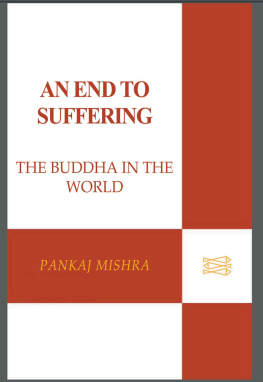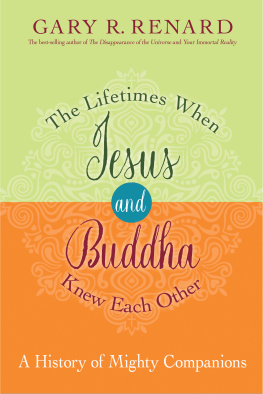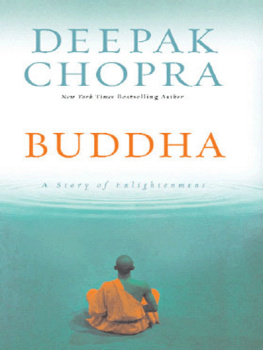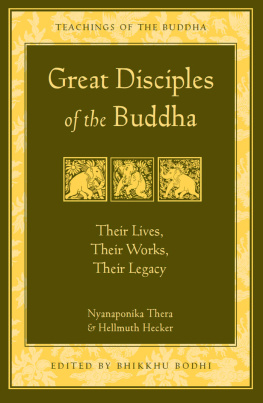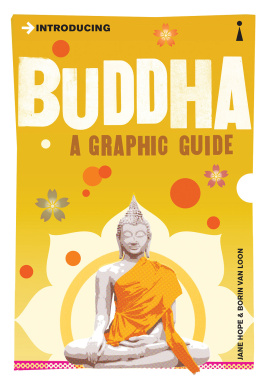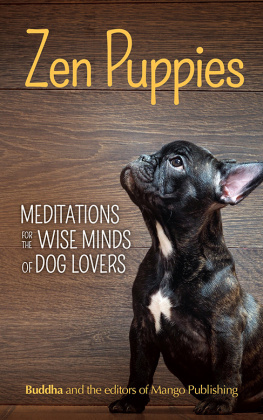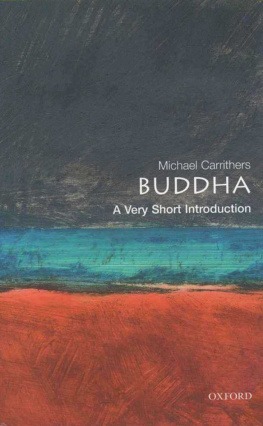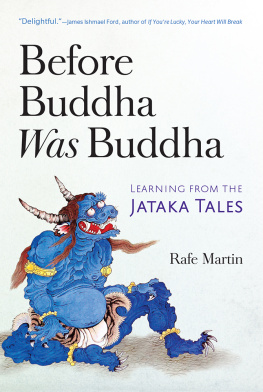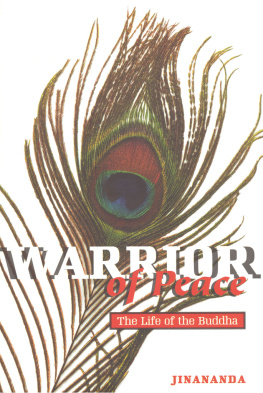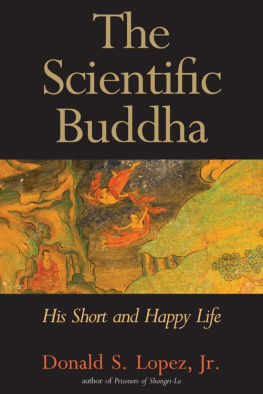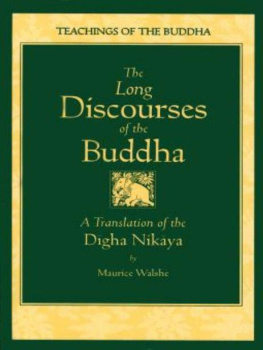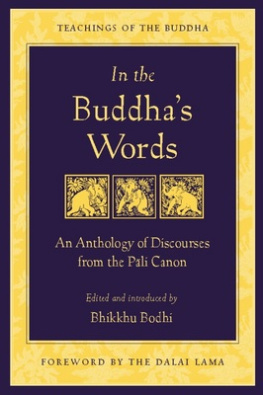Table of Contents
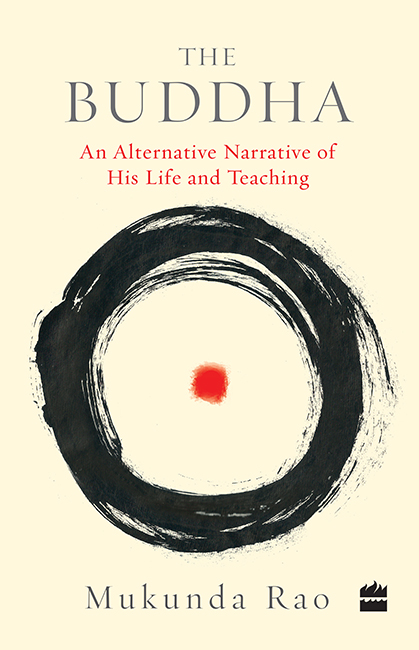
The Buddha
An Alternative Narrative of His Life and Teaching
MUKUNDA RAO

Contents

I n Buddhist scriptures, the body is mostly seen as a source of trouble, an obstacle in the path of spirituality, a burden to be overcome in order to attain enlightenment. Such an attitude towards the body (also to be found in Hindu and other religious texts), compounded by an inadequate knowledge of it in comparison to the mind or soul, probably prevented an understanding of the biological changes involved in altered states of consciousness, especially in the transformation of a human being into an enlightened being.
Unfortunately, the situation has not changed much even today. Spiritual discourses continue to be shrouded in supernaturalism, myth and metaphor, while enlightenment or nirvana is still viewed as separate from the body or unrelated to the body. The body is seen as a sort of enemy that needs to be controlled and disciplined in ones spiritual enterprise.
It is not as if attempts have not been made, either in the past or in the present, to remedy this defective view, but these attempts have been subsumed under discourses that were and are largely framed in psychological terms. Hence, the body continues to be regarded as an obstacle to be overcome in the spiritual quest. This book is an attempt to fill the gap in our understanding of the biological foundation of nirvana.
Within this fathom-long sentient body itself, the Buddha maintained, are the world, the arising of the world, the cessation of the world and the path leading to the cessation of the world. In other words, the arising of the world, the self and the cessation of the self and thereby, the cessation of what the Buddha calls dukkha, are all within the body.
Extending the metaphor, we may add that within the body is the cosmic dance of life; rather, the cosmos itself is the body. Here, the portrayal of the vishwarupa, the universal form of Lord Krishna as given in the Bhagavadgita, may serve as a brilliant metaphor for the body.
After a rather lengthy discourse on the different forms of yoga and on the nature of Brahman and Atman , Krishna bestows on Arjuna a vision of his universal form . Arjuna beholds the whole cosmos reflected in the seamless body of Krishna: all the innumerable forms of life exist here, and in the centre is Brahma resting on a lotus, surrounded by sages and heavenly serpents. The sun, the moon and the heavenly planets blaze along; worlds radiate within worlds in a never-ending kaleidoscope; rivers flow relentlessly into thunderous seas. In effect, what the text, rather unwittingly, reveals is that it is not the soul or spirit but the body that is immortal; it is boundless, without a beginning, a middle or an end.

The teaching of the Buddha is primarily about the nature and functioning of the mind and about enlightenment, a state of being where all conflicts and fears have ceased, where the divisive mind has gone quiet and the body, now cleansed of destructive passion and re-established in its pristine state, begins to live in a rhythm natural to it and in tune with the cosmos. This is also a state where there is, to use a Biblical phrase, peace that passeth understanding. This is the state of being, the answer, the change, the goal that humanity, through its philosophies and religions, has been yearning and struggling for since the beginning of civilization.
It is the spiritual impulse in us that sets up the quest, the search for truth and for enlightenment. During this journey, we pursue knowledge, listen to gurus, do sadhana and meditate. Thus we struggle for years, yet the goal seems to elude us. We realizeif we are ruthlessly honest with ourselvesthat after a point, this long, testing journey with all its sadhana and experiences has turned counterproductive. We may sometimes feel we are making progress, getting nearer, almost there but it is a delusion: we are only moving in circles. Indeed, it is hard to grasp and difficult to accept that, eventually, it is this spiritual knowledge and sadhana that prevents us from reaching the purported goal of our quest: freedom. To understand and accept this tricky situation, wholly and honestly, would entail giving up the spiritual struggle, but we are not prepared for this.
In other words, the state of being where the binary or divisive mind has gone quiet, where dukkha has ended, is the freedom we seek. This is the natural state of every human being. But it is a state of being that sadhana cannot take us to, and our mind cannot reach. Knowledge, the product of the mindwhich is mind itselfcannot penetrate there, where differentiations dont exist, where there is no duality. It has to give way to something else.
What is that something else? Can the mind ever become quiet? Can anything be understood at all without the mind? What is the nature of the mind and the body? What is suffering? Can morality change people? What is knowledge? Is there a beyond; is there timelessness?
This narrative examines these timeless existential questions by revisiting and retelling the story of the Buddha. No easy task, given the bewildering number of Buddhist schools and sub-schools, and the extensive literature covering a period of more than sixteen centuries, the sheer complexity and vastness of which can be quite intimidating even to a thoroughgoing scholar. Being neither a scholar nor a philologist, I have approached my task as a seeker.
Drawing from diverse sources such as the Pali canon, Mahayana texts, Zen Buddhism, J. Krishnamurti, Ramana Maharshi, U.G. Krishnamurti, Nietzsche, postmodernist thinkers and the biological sciences, I have tried, using S. Radhakrishnans expression, to wrest from words the thought that underlies them, as I retell the story of the Buddha and discuss his teachings in a language free of metaphysics and mysticism.

In such a work where the subjects discussed intersect continually, repetitions are inevitable. For instance, while talking about the nature and functioning of the mind, body and soul, nirvana or the natural state and so on, certain words and expressions and even quotations from the Pali canon and other texts may turn up again and again, and I hope they will enable one to see things from multiple perspectives and get a sense of the various concepts used. However, we need to bear in mind that all concepts and ideas used in the narrative are not of absolute but of relative and instrumental value; they are only pointers to that which cannot be captured in the fishbowl of the mind.
Readers may find some of the quotations, especially from the Pali canon and U.G. Krishnamurtis books, quite lengthy and even distracting, but I believe its absolutely necessary in such a narrative to give a feel of the original, to let the masters speak directly to us. I have deliberately not used diacritical marks for Sanskrit words, simply because I think its time we do away with the practice. Most of these words or terms are well known; even otherwise, a serious and discerning reader will surely make efforts to grasp them.

It is quite possible that all my readers may not always agree with my interpretation of the Buddhas teaching, and they may have reservations about my biological interpretation of nirvana in particular. I know this kind of reading of the Buddhas life and teaching is something very different and may even challenge the interpretations put forward over the years by many monks and scholars.


